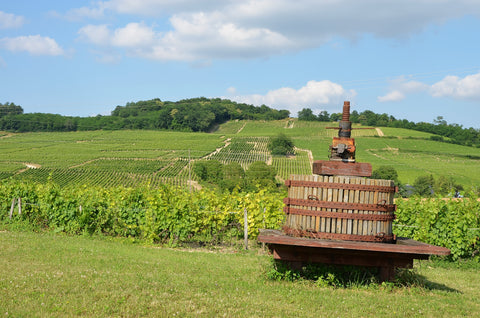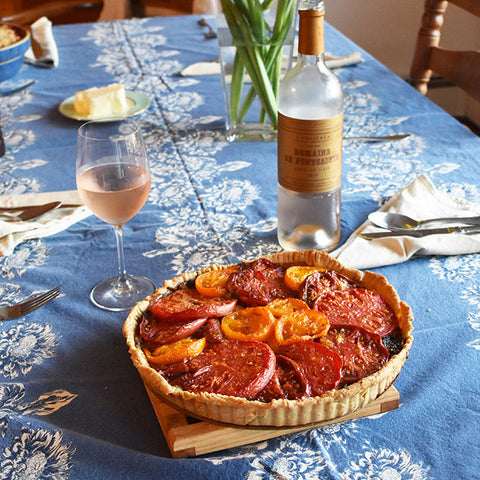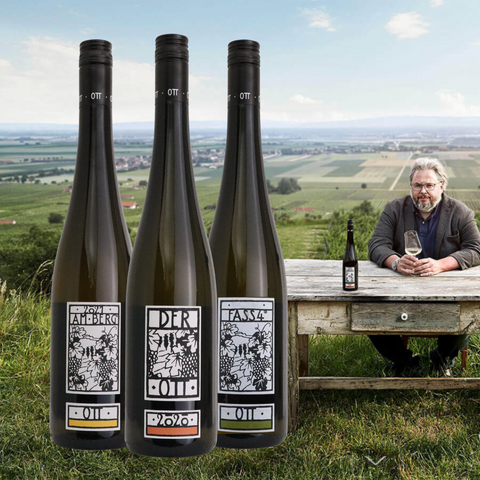The Sancerre appellation is located in the Loire Valley and covers nearly 6850 acres and 14 communes in the Cher department, which are: Bannay, Bué, Crézancy-en-Sancerre, Menetou-Râteal, Ménétréol-sous-Sancerre, Montigny, Saint-Satur, Sainte-Gemme-en-Sancerrois, Sancerre, Sury-en-Vaux, Thauvenay, Veaugues, Verdigny and Vinon.

The Loire is the longest river in France. However, its main vineyards are actually along a few hundred kilometers leading to its mouth on the Atlantic to the west. The Loire Valley can be generically divided into 4 sub-regions (from East to West): Centre, Touraine, Anjou-Saumur and Pays Nantais. However, unlike the other regions of France, the sub-regions of the Loire do not constitute appellations. The Loire Valley does not have a generic appellation other than the IGP Val de Loire which covers the entire region. These are generally fresh, light and fruity white wines. The Sancerre appellation is located in the Center sub-region which also includes the Menetou-Salon and Pouilly-Fumé appellations, and more precisely in the natural area "les collines du Sancerrois". The vineyard thus extends over 6,850 acres, on the right bank of the Loire.

THE HISTORY OF SANCERRE
The vine has flourished in Sancerre for many centuries since there are still writings dating from 582 attesting to its existence. The notion of climate did not appear until 1482. Over the centuries, the Sancerre vineyards have been the subject of much curiosity and have intrigued great personalities: the Abbé Poupart notably wrote in 1777: "There is perhaps no terroir more cut and more differentiated than that of the Sancerrois Mountains. The ravines, which are multiplied there, offer everywhere different veins of earth”. Then, in 1891, Sancerre experienced the crisis of Phylloxera, an aphid devastating the vine. This event is actually a blessing in disguise because the vineyard, totally devastated, is replanted in its entirety with a single grape variety: Sauvignon and Pinot. This is the consecration of the great aromas of Sancerre! Finally, the white Sancerres obtained the AOC in 1936, followed by the red and rosé Sancerres (from Pinot Noir) in 1959.
SANCERRE: A THOUSAND LAYERS
To understand the geology specific to the Sancerre appellation, you have to go back a few million years earlier. At that time, the sea covered the entire Sancerre vineyard and left behind the foundations of the current reliefs. Thus, layers from very distant eras overlap, or even rub shoulders at the same level. In places, entire geological levels disappear. Other layers intertwine, giving rise to new eminences... The rejects, whose height can reach 270 meters in Saint-Satur, draw the many hills of Sancerrois. You have thus just discovered the secret of this very special land: depending on where you are, a few tens of meters apart, the ground and the subsoil have neither the same age nor the same nature. The vines are thus very lucky: their roots cross all these different geological layers and absorb totally different minerals. This is where all the specificity and diversity of the Sancerre vineyard lies.
AT THE ORIGIN OF A REMARKABLE DIVERSITY OF AROMAS!
As you will have understood, with such a diversity of soils and subsoils, there are never two wines alike in Sancerre. The most clayey white lands can produce a complex, full-bodied and round white Sancerre that will open up as it grows. The wine produced on the caillottes is fond of youth and floral and fruity expression. Produced on clay-siliceous soils, the wine will be marked by minerality, spicy notes and aromas of white flowers. Finally, the red Sancerre produced on the most calcareous marls give a long-lasting wine on the palate, with subtle aromas of red fruits. Across the entire vineyard, there are more than 7,500 plots which are all mini-terroirs.
Around 25 million bottles are produced in total every year, of which 75% are white, 20% red and 5% rosé.



